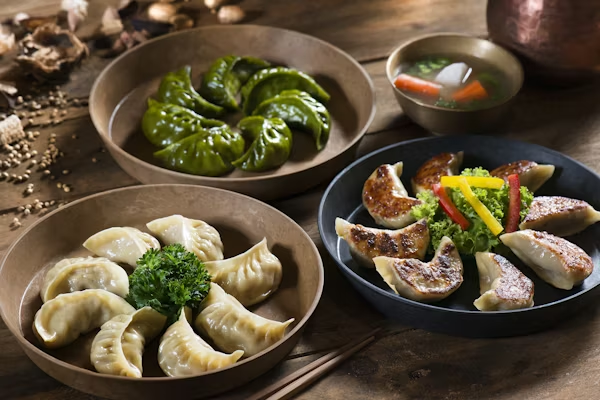When I first traveled through Nepal, I expected to be wowed by mountains—but what truly stayed with me were the sounds. Not just the honks of city traffic or temple bells, but something deeper: music drifting through alleyways, festivals, and firesides. In every village and valley, I found people holding onto beautiful, hand-crafted instruments—some big, some tiny, but all full of life. These instruments weren’t just for performance; they were part of the everyday rhythm of Nepal. Children learned them at home, elders played them with eyes closed, and communities gathered around their sound like old friends. They were more than tools—they were storytellers. The Soulful Musical Instruments of Nepal have indeed fasinacted me in every aspects.
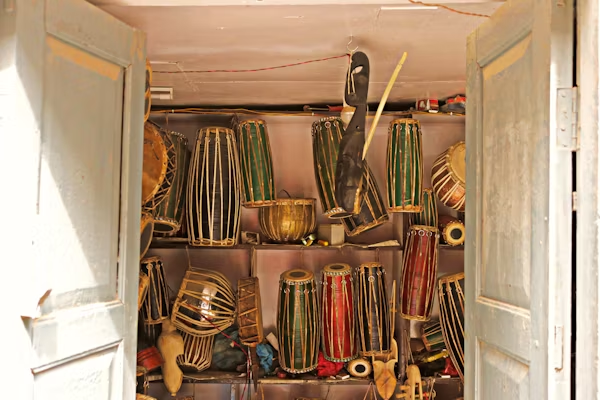
Nepal’s traditional instruments aren’t locked away in museums—they’re living, breathing, and often handmade from the earth itself. Wood from nearby forests, skins from local livestock, and strings strung with love and skill. Each region has its own sound, its own music, and its own way of expressing joy, prayer, or memory. The mountains echo with stringed sorrow, while the lowlands pulse with percussive celebration. And everywhere, the music binds people across age, caste, and background. It’s in the festivals, the rituals, and even quiet moments under a tree.
What makes these instruments truly unforgettable is how personal they are. A madal beat might remind someone of a wedding, while the gentle notes of a tungna might bring back a story told by a grandfather. There’s emotion in every vibration, history in every drumbeat, and identity in every note. You don’t just listen to Nepali instruments—you feel them. They speak in ways words cannot. And once you’ve heard them, a piece of you will always hum along.
1. Madal – The Heartbeat of Nepali Folk
The madal is possibly the most beloved folk instrument in Nepal—you’ll hear it in almost every village song and festival tune. I remember the first time I held one; it was light, wooden, and warm to the touch, with leather heads tied tightly by ropes. The moment someone played it, I felt the rhythm in my chest—steady, earthy, and deeply human. It’s played by striking both ends, with one hand creating a sharper beat and the other a deeper tone. You don’t need to be a master—just feeling the rhythm is enough to join in. That’s what makes the madal so special: it belongs to everyone.

Traditionally, the madal was made from carved logs and goat skin, crafted by hand in the homes of the Magar and Gurung communities. It’s said to have originated in Nepal and then influenced musical styles beyond the country’s borders. Even in modern Nepali pop or fusion songs, the madal still finds its place. It blends past and present with ease, holding a unique space in both the folk and contemporary scenes. I’ve seen it passed from father to son, like a family heirloom. And each madal carries its own story—of celebrations, sorrow, and shared songs.
More than an instrument, the madal is a companion. It’s there at weddings, harvest dances, political protests, and nights around the fire. I’ve seen a lone traveler sit under a tree and play one softly, as if speaking to the wind. Its beat is honest—never too fancy, never trying too hard. That’s the beauty of the madal: it says everything without needing words. It truly is the heartbeat of Nepal.
2. Sarangi – The Singing Wood of the Hills
The first time I heard a sarangi, it didn’t feel like music—it felt like someone was crying and smiling at the same time. It’s a bowed string instrument, small in size, but big in emotion. Traditionally used by the Gandharva (Gaine) community of Nepal, the sarangi is carved from a single piece of wood and played with a horsehair bow. It has four strings, and its sound is hauntingly human. The moment that bow hits the string, it feels like the mountains themselves are singing. It’s raw, soulful, and unforgettable.
The sarangi was originally used by travelling minstrels who would sing news, love stories, and folk tales from village to village. It was how stories traveled before radios or phones existed. I remember an old man with a weathered sarangi who sang about a king’s lost daughter—his voice and instrument perfectly matched, like two parts of the same heart. The sound stuck with me long after the performance ended. And I finally understood why people call it the “voice of the hills.” It’s not just played—it’s felt.
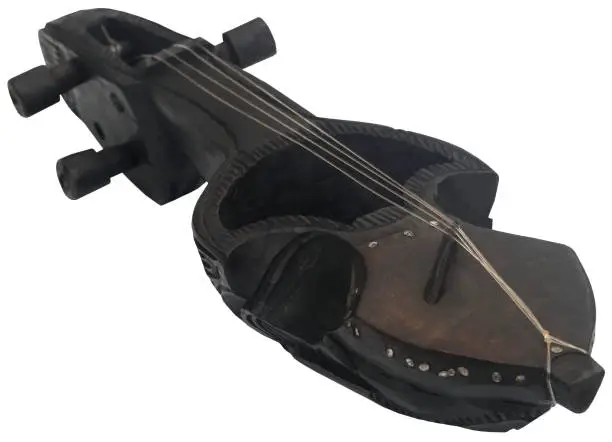
Today, the sarangi is experiencing a beautiful revival. Young musicians are blending it with jazz, blues, and even electronic music—giving it a whole new life. But even in fusion, the soul of the sarangi remains. You can’t fake its emotion—it either comes from your heart, or it doesn’t come at all. That’s why the sarangi will always remain a true symbol of Nepali musical identity. A storyteller with strings.
3. Tungna – The String of the Mountains
The tungna is like a hidden gem among Nepali instruments—less famous, but deeply rooted in the mountain culture of the Tamang and Sherpa people. I saw it first in a small village near Rasuwa, played by a quiet man in a warm hat. It’s made from wood and animal hide, often carved beautifully with symbols and patterns. The tungna has four strings and is played by plucking, like a guitar, but its sound is softer and more intimate. There’s a gentleness to it, like a lullaby sung to the hills. And when it plays, everything else just fades.
Traditionally, the tungna was played during village gatherings, storytelling nights, and spiritual ceremonies. It’s said to be older than most written records of music in the region. It’s not meant for loud performances, but for connection—between the player and the listener. Sometimes the tunes don’t have lyrics, just melodies passed down through memory. I listened to a song called “Ama Ko Yaad”—a remembrance of a mother—and it brought tears to my eyes. That’s the power of the tungna—it speaks when words can’t.
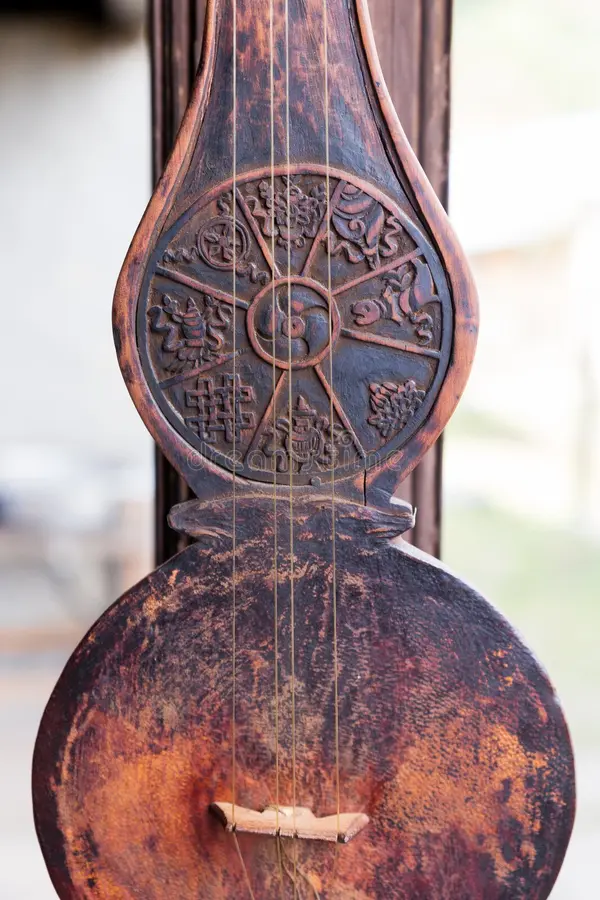
In recent years, a few artists have brought the tungna to global stages, combining it with world music and ambient sounds. But its soul still belongs to the misty trails and quiet nights of the Himalayas. It’s humble, heartfelt, and full of history. And when you hear it, you feel like you’re sitting by a fire, wrapped in a blanket of memory. The tungna doesn’t shout. It whispers, and that’s what makes it unforgettable.
4. Dhimay – The Giant Drum of the Newars
The Newar community plays the Dhimay—one of the oldest and largest traditional drums of Nepal—during religious festivals and processions. I first saw it during the Biska Jatra in Bhaktapur, where its thunderous sound shook the air, as if the earth itself had a heartbeat. Players carry the huge, barrel-shaped drum slung across their shoulders, striking one side with a curved stick and the other with a bare hand. They create a rhythm that’s not just loud but powerful, like a call to the gods. As they march forward, the sound pulls people into a shared trance. The Dhimay doesn’t just make music—it shapes the entire atmosphere.
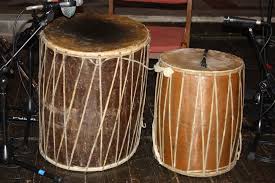
What amazed me was how the sound of the Dhimay could be both wild and disciplined at the same time. It brings people together in dance, prayer, and celebration, turning city squares into living stages. I once saw a little boy, barely five, try to mimic the older players with a tiny toy drum—it was adorable and powerful all at once. That’s what the Dhimay does: it inspires. And its echo stays long after the festival ends.
5. Panche Baja – The Orchestra of Tradition
When I attended a rural wedding in western Nepal, the joyful chaos of the Panche Baja—not a DJ—welcomed me. Musicians played this traditional Nepali ensemble made up of five instruments: the damaha (kettle drum), tyamko (small drum), jhyali (cymbals), narsingha (long curved horn), and shehnai (reed instrument). As soon as they began playing, the mood shifted—people danced, laughed, and cheered. The Panche Baja doesn’t just create music; it announces celebration, pride, and the joy of community. You don’t sit back and listen—you jump in with your whole body. And that’s what makes it unforgettable.
Panche Baja and Damai
Traditionally played by the Damai caste, Panche Baja has long been a part of weddings, religious events, and victory marches in the hilly regions of Nepal. Its sound is loud and lively, meant to carry over mountains and through valleys. Each instrument in the set has its role, but together, they form a harmony that feels deeply festive. I remember seeing an old man playing the narsingha with puffed cheeks and sparkling eyes—he had been doing it for over forty years. And every beat still made his feet move. That joy is contagious.
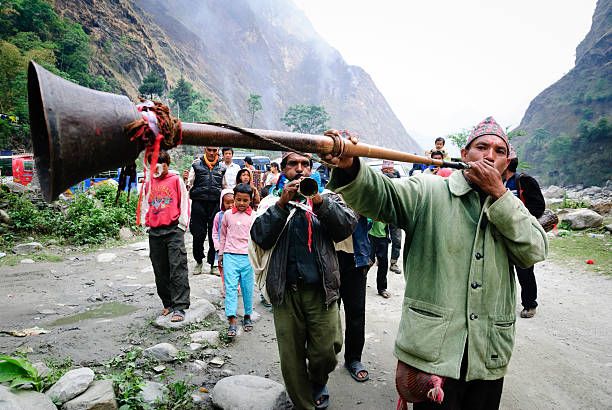
These days, some modern ceremonies replace the Panche Baja with speakers and playlists. But in villages, its role is still sacred and irreplaceable. Even young people are learning the craft, keeping the legacy alive. Because this music isn’t just about tradition—it’s about identity, family, and shared joy. And when you hear it, you feel like something bigger than yourself is happening. That’s the power of Panche Baja: it turns any gathering into a celebration of life.
6. Damaru – The Drum of the Divine
The Damaru ranks as one of the smallest instruments on this list—but it carries immense spiritual weight. I watched a Hindu priest play it during a ritual near the Pashupatinath Temple, flicking his hands in small, steady movements. The drum takes the shape of an hourglass, and players shake it so that two knotted cords strike the sides. Despite its size, it produces a sharp, rhythmic sound that often accompanies chanting and meditation. In Hindu tradition, people honor it as the drum of Lord Shiva, a symbol of creation and destruction. And when it plays, it feels as if it keeps time itself in motion.
The Damaru has roots in both spiritual and shamanic practices in Nepal, especially in hill and mountain regions. Shamans and sadhus use it during trance rituals, prayers, and spiritual healing. Its beat is believed to synchronize the body and mind, guiding one into deeper focus. I’ve sat in a quiet corner of a temple and listened to a damaru beat slowly during a chant—and it made my heart slow down. That’s when I understood: it’s not just an instrument; it’s a spiritual tool. A bridge between the physical and the divine.
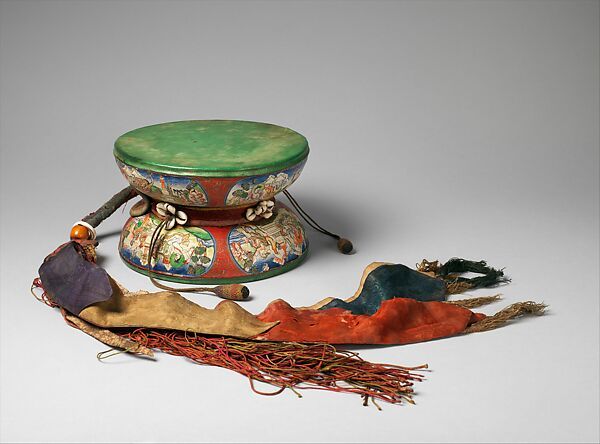
7. Binayo – The Forest’s Whisper
I discovered the Binayo while hiking through a Limbu village in eastern Nepal, and its sound struck me as unlike any instrument I had ever heard. Musicians craft it from a thin piece of bamboo or metal and pluck it while holding it to their lips. It produces a soft, buzzy, almost secret sound—like a bee humming in a quiet forest. Players don’t perform it for crowds; they play it for themselves, for love, for moments that speak without words. A young man who played it told me that boys often used the Binayo to express affection or flirt from a distance. It speaks in a subtle, personal, and deeply poetic way.
The Kirat communities, like the Limbu and Rai people, mostly use the Binayo in their traditional music and courtship rituals. Players develop the skill to play it through patience—controlling the tone not just with their fingers, but with their breath and the shape of their mouths. They turn it into a conversation between themselves and the instrument. I watched someone play a melody that laughed and sighed at the same time. The sound felt intimate, like I was overhearing a secret. And in that moment, I realized: music doesn’t need to be loud to be powerful.
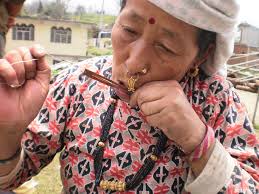
In a world filled with flashy sound, the Binayo reminds us of the quiet joy of personal expression. It’s light enough to carry in a pocket but deep enough to carry emotion. Some young artists now use it in lo-fi and ambient fusion tracks, blending tradition with modern mood. But its roots remain humble and close to the earth. Like a whisper shared with the wind. And that’s why it holds a special place in Nepal’s musical soul.
Conclusion
These seven instruments aren’t just pieces of wood, metal, or skin—they are stories, lifelines, and soul-bearers of Nepali heritage. Each has its own voice, its own setting, and its own role in the rhythm of everyday life. From the deep thump of the Madal to the whispering hum of the Binayo, they tell stories of joy, sorrow, prayer, and celebration. They are teach touch, sound, and community. And in every beat, strum, or breath, you hear not just music—but identity.
Traveling through Nepal, you’ll find these instruments not in glass displays but in hands, hearts, and homes. You’ll hear them echo through the hills, vibrate through narrow alleyways, and rise from temple courtyards at dawn. People weave them into life here—they mark birth, marriage, harvest, and goodbye. Even as modern music grows, these traditional sounds stay strong, adapting without losing their roots. That’s their magic. They live and breathe with the people.
